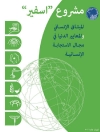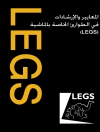For the first two thirds of our evolutionary history, we hominins were restricted to Africa. Dating from about two million years ago, hominin fossils first appear in Eurasia. This volume addresses many of the issues surrounding this initial hominin intercontinental dispersal. Why did hominins first leave Africa in the early Pleistocene and not earlier? What do we know about the adaptations of the hominins that dispersed – their diet, locomotor abilities, cultural abilities? Was there a single dispersal event or several? Was the hominin dispersal part of a broader faunal expansion of African mammals northward? What route or routes did dispersing populations take?
表中的内容
The African Background.- Early Pleistocene Mammals of Africa: Background to Dispersal.- Carnivoran Dispersal Out of Africa During the Early Pleistocene: Relevance for Hominins?.- Saharan Corridors and Their Role in the Evolutionary Geography of ‘Out of Africa I’.- Stone Age Visiting Cards Revisited: A Strategic Perspective on the Lithic Technology of Early Hominin Dispersal.- Eastern Asia.- Behavioral and Environmental Background to ‘Out-of-Africa I’ and the Arrival of Homo erectus in East Asia.- New Archeological Evidence for the Earliest Hominin Presence in China.- Geological Evidence for the Earliest Appearance of Hominins in Indonesia.- Divorcing Hominins from the Stegodon-Ailuropoda Fauna: New Views on the Antiquity of Hominins in Asia.- South Asia.- Early Pleistocene Mammalian Faunas of India and Evidence of Connections with Other Parts of the World.- The Indian Subcontinent and ‘Out of Africa I’.- The Early Paleolithic of the Indian Subcontinent: Hominin Colonization, Dispersals and Occupation History.- Europe and Western Asia.- Early Pleistocene Faunal Connections Between Africa and Eurasia: An Ecological Perspective.- Early Pleistocene Faunas of Eurasia and Hominin Dispersals.- Fossil Skulls from Dmanisi: A Paleodeme Representing Earliest Homo in Eurasia.- Summary, Synthesis and Future Directions.- “Out of Africa I”: Current Problems and Future Prospects.- Summary and Prospectus.
关于作者
John Fleagle is Distinguished Professor of Anatomical Sciences at Stony Brook University. He has conducted paleontological field work in many parts of the world, including Argentina, Egypt, Kenya, Ethiopia, and India. He is the author of the textbook Primate Adaptation and Evolution (1988, 1999, Elsevier), Co-Editor of the Human Evolution Sourcebook (1993, 2006, Prentice Hall) and the Editor of journal Evolutionary Anthropology.












